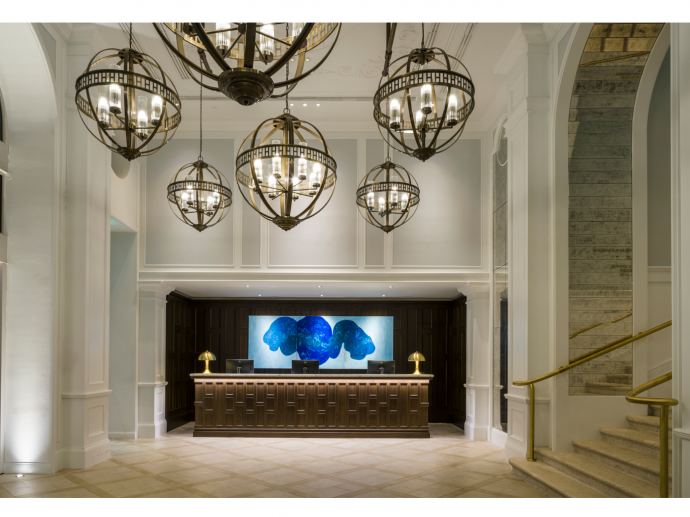Categories more
- Adventures (17)
- Arts / Collectables (15)
- Automotive (37)
- Aviation (11)
- Bath, Body, & Health (77)
- Children (6)
- Cigars / Spirits (32)
- Cuisine (16)
- Design/Architecture (22)
- Electronics (13)
- Entertainment (4)
- Event Planning (5)
- Fashion (46)
- Finance (9)
- Gifts / Misc (6)
- Home Decor (45)
- Jewelry (41)
- Pets (3)
- Philanthropy (1)
- Real Estate (16)
- Services (23)
- Sports / Golf (14)
- Vacation / Travel (60)
- Watches / Pens (15)
- Wines / Vines (24)
- Yachting / Boating (17)
Published
08/26/2022 by Goddard LittlefairInternationally acclaimed interior designer Jo Littlefair has revealed her top tips for lighting both residential and hospitality spaces. Having amassed an unmatched level of expertise and with a career that includes multi-award-winning hotels, restaurants, spas, wellness centers, and luxurious residences such as The Mayfair Townhouse in London, Villa Copenhagen in Denmark and The Gleneagles Hotel in Scotland, Jo is well-equipped to provide invaluable advice on using and commissioning lighting to set the right atmosphere.
Bespoke lighting features, in collaboration with innovative makers, are characteristic of the design studio and makes for unique and striking interior schemes.
Grant light the attention it deserves
"Lighting should never be underestimated, not only is it essential for various tasks but it has a huge impact on the ambience of a room and consequently how people feel and react in the space. If you have the ability to plan the architectural lighting of a space, that is the lighting that is fixed to the framework of the room, then consider how the light sources themselves can be concealed in coffers or by lighting shelves of a bookcase for example. Don’t ignore the obvious places where you need task lighting such as above a sink, I did this once and my husband has never forgiven me! Then ensure that they are on different, dimmable circuits so that layers of light can be turned on or off to achieve the perfect setting. Ensure there is as much side light as possible, by which I mean side and table lamps as well as wall lights, which gives flexibility to move light around a room and highlight dark corners or create a reading chair without flooding the whole room with light and essentially killing any atmosphere. Sideways light is always more flattering than anything from directly above!"
Bear in mind architectural lighting
"Architectural lighting, such as concealed tracks or directional spotlights, are absolutely key. Think of your room as a canvas with areas in focus and areas in darkness and ask yourself what you want to highlight and what you want to knock back into shadow. For example, accentuate the texture of a tongue and groove clad ceiling by washing it with an LED track, pin spot columns with floor recessed uplights and consider the use of concealed LED tracks to task light a kitchen work surface. Ideally I like to be unable to see the light source itself and just feel the benefit from the effect".
Make decorative and key lighting decisions
"Architectural lighting can be even more concealed and instead place an emphasis on decorative lighting as the design of these pieces add soft personality and texture to the spaces".
"For the Mayfair Townhouse wanted each space to have its own design language therefore each space has its own decorative lighting design. To emphasise the residential feel there are multiple designs of lighting which also create a lovely, layered feel. It was about a richness of material to convey luxury and indulgence, using brass, alabaster, pleated silk and hand-crafted glass."
Focus on ambient light
"Ambient lighting in a restaurant or bar is absolutely key to giving the desired atmosphere and consequently influencing how people spend time in a space. Establishing whether the offer is a quick turn-around breakfast or lunch space, for example, or a long, layered and leisurely experience dictates whether lighting levels should be high or moody and atmospheric."
Always remember what light brings to a space
"Lighting truly helps to create and emphasise that residential and intimate feel that we wanted to achieve for The Mayfair Townhouse. It creates a sense of warm and invites you into the space. Standing on the street at the entrance of the hotel, it’s the lighting that catches your eye and draws you in, especially the feature lit gantry above the bar which is made up of individually hand cut glass feathers. The lighting works seamlessly with the design as a whole, it’s a delicate balance of traditional and contemporary".




















